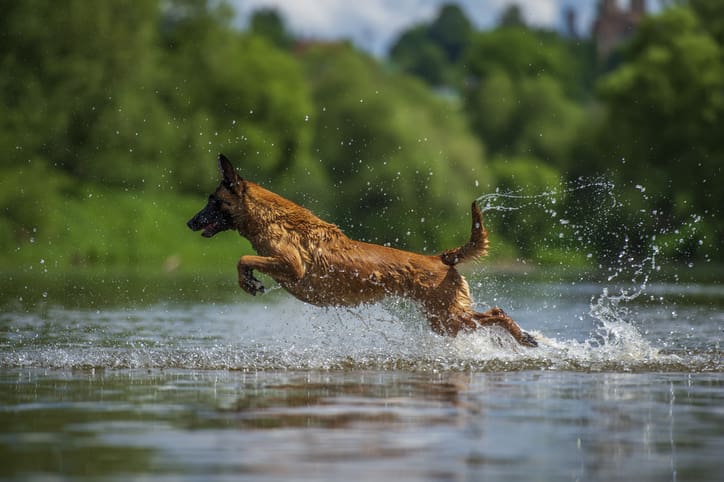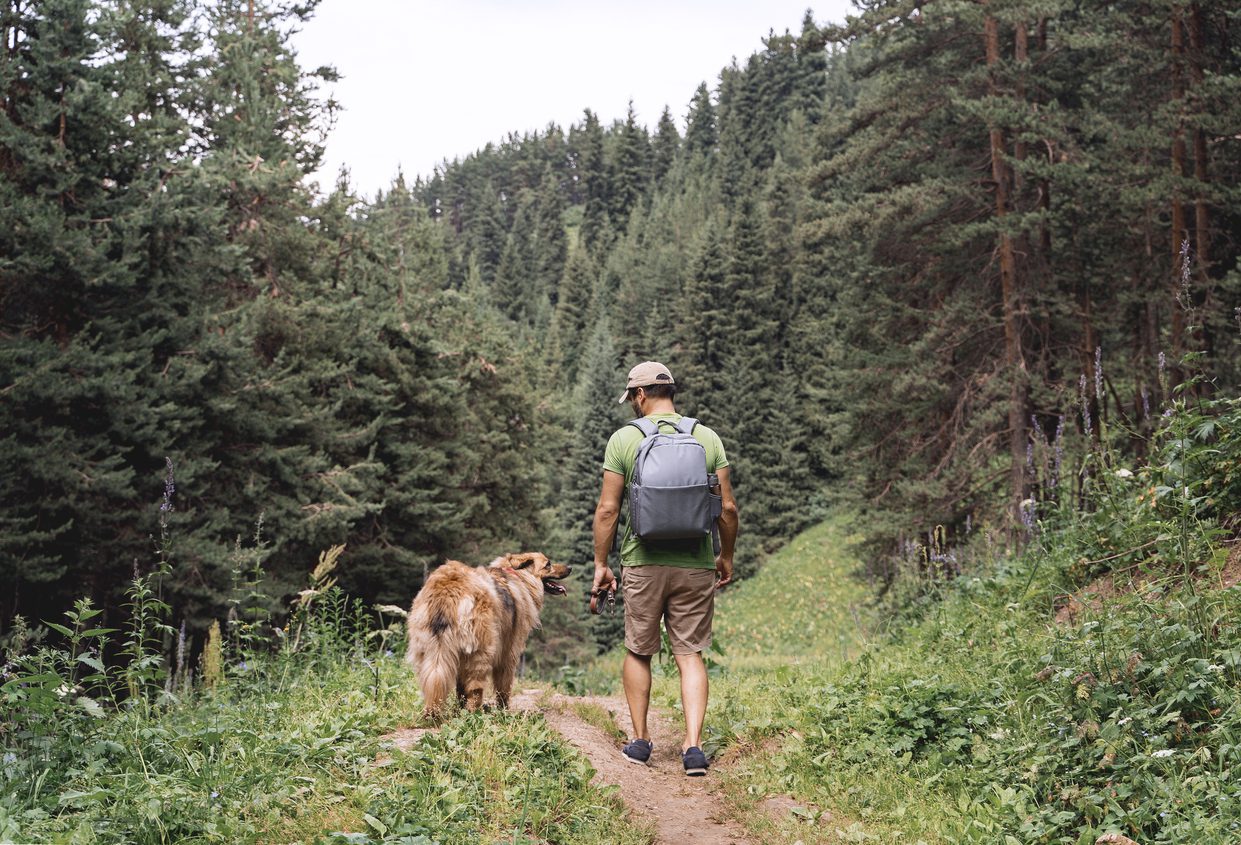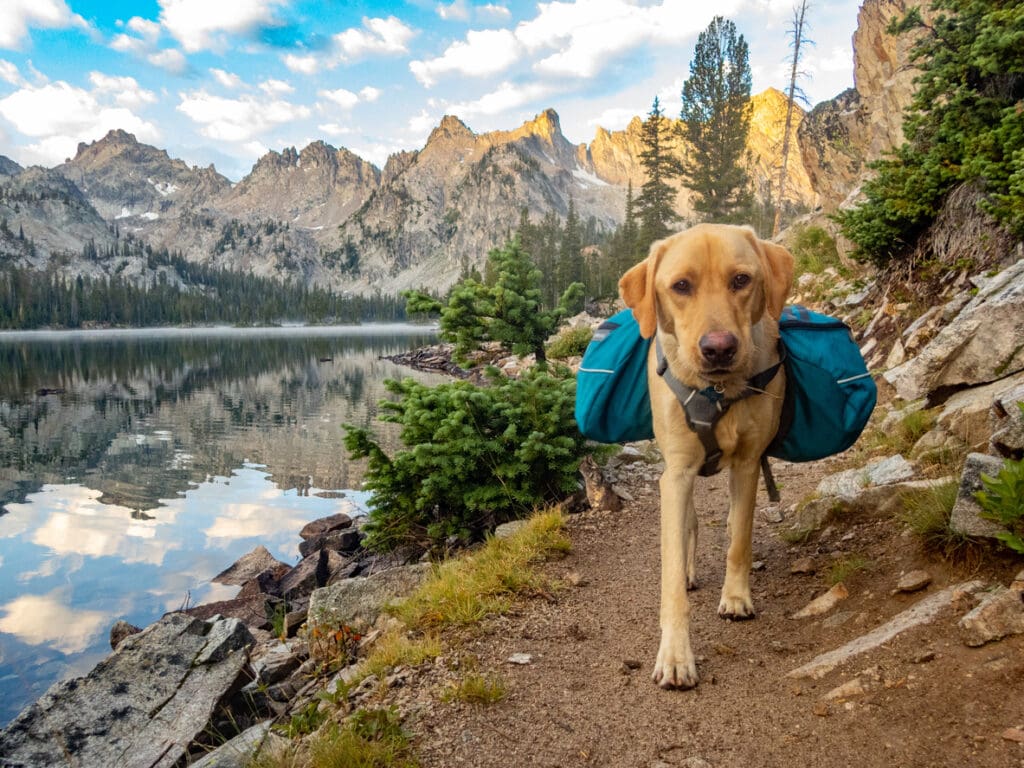
Dog water safety is crucial for ensuring your pet enjoys swimming safely. It's important to consider water safety at beaches and oceans, where natural stimuli and potential hazards can be present. This guide will help you assess if your dog is comfortable in water, choose the right flotation device, and more. Keep reading to learn how to make water activities safe and fun for your dog.
Introduction to Dog Swimming
Dog swimming is an excellent way to provide both exercise and mental stimulation for your furry friend. With the right approach, most dogs can learn to swim safely and enjoyably. However, it’s important to remember that not all dogs are natural swimmers. Some breeds, due to their physical characteristics like webbed paws and water-resistant coats, are better suited for swimming than others.
Patience and positive reinforcement are key when teaching your dog to swim. Start with a gradual entry into the water to prevent anxiety or stress. Using the right equipment, such as a dog life jacket or life vest, can provide the extra buoyancy and support your dog needs to feel secure in the water.
Swimming lessons can be a great way to teach your dog to swim. Many dog breeds, such as Labrador Retrievers and Golden Retrievers, are excellent swimmers and love the water. As a pet parent, it’s essential to consider your dog’s comfort level and safety when introducing them to swimming. With the right approach, you can help your dog enjoy the water and swim safely.
Key Takeaways
- Assess your dog’s comfort level in water before swimming and use positive reinforcement to help them feel secure.
- Choose the right flotation device for your dog, considering factors like breed, buoyancy, visibility, and durability.
- Always supervise your dog during swimming, watch for signs of fatigue, and provide hydration and rest breaks to ensure a safe experience.
Assessing Your Dog's Comfort Level in Water
Before letting your dog dive into the pool or ocean, assess their comfort level with water. Not all dogs are natural swimmers, and understanding your pet’s individual needs can make all the difference. Start by observing your dog’s behavior around water. Do they seem curious, or are they hesitant and anxious? Watching an adult dog enjoying the water can help a puppy become more comfortable and inspired to play in water.
Introduce your dog to water gradually by letting them stand at the edge of the pool or shallow water. Encourage your dog to approach and enter the water using treats. Positive reinforcement, such as praise and petting, can help them feel secure. Floating toys can also entice a hesitant dog.
Short and fun swimming sessions reduce anxiety and keep your dog engaged. Avoid forcing your dog into the water to prevent negative associations. Patience and gradual exposure are key to teaching your dog to swim safely.
Choosing the Right Flotation Device
A good flotation device can be a literal lifesaver for water safety. Dog life vests are designed to provide extra buoyancy, helping your dog stay afloat and visible in the water. A life jacket is preferable for active swimming sessions due to better coverage and buoyancy, while a lighter life vest suffices for relaxed pool activities.
Look for durability, waterproof materials, an adjustable fit, and reflective trim for visibility in a flotation device. Bright colors are also essential for keeping an eye on your dog, especially in natural bodies of water.
Breeds like Bulldogs and Whippets, which are not naturally buoyant, need a dog life jacket to stay afloat. Brachycephalic breeds, such as Bulldogs, face additional challenges due to their anatomical limitations, making it crucial to choose the right flotation device for them. Additionally, a handle on a life jacket is incredibly useful for easy rescues and assisting in teaching your dog to swim. Dog breeds that lack buoyancy particularly benefit from this support.
It's also important to minimize your dog's exposure to chemicals in pool water, such as chlorine, by keeping the water properly balanced and safe.
Safe Entry and Exit Points
Safe entry and exit points in the swimming area are crucial for your dog’s safety. Dogs naturally try to exit the pool from the same point they entered, so clearly defined steps or ramps are essential. Guide your dog with a recall leash and lead them up the steps repeatedly to train them to use these exit points.
It is important to teach your dog how to safely navigate pool steps to ensure they can exit the pool effectively. Practice various scenarios to make sure your dog can find and use the steps independently.
Reinforce the location of exit points by occasionally testing and practicing from various entry points in the pool. Ensuring your dog can climb out of the water safely provides peace of mind and prevents accidents.
Stay close to your dog while they get in and out of the water. Gradual entry and exit at their own pace make the experience a fun way to ensure it’s stress-free.
Monitoring Water Conditions
Always check the water conditions before letting your dog take a plunge. The minimum safe swimming temperature for dogs is 100 degrees Fahrenheit when combining air and water temperature. Cold water can be dangerous, especially for dogs with short legs or thin coats. Additionally, ensure the water is free from harmful chemicals like chlorine, which can affect your dog's health.
Avoid areas with visible algae or stagnant water, which can harbor harmful bacteria and parasites. Natural body currents in rivers or the ocean can present a risk of drowning, so monitor for strong currents or deep water before allowing your dog to swim. Check that the swimming area is safe, free from hazards, and easily accessible for your dog. Ponds can offer a natural and calm environment for teaching dogs to swim, allowing them to explore water at their own pace.
Provide fresh water for your dog to prevent them from drinking from lakes, ponds, or even pool water, which can lead to illness. Keeping your dog hydrated with fresh water during swimming sessions ensures they stay healthy and happy.
Supervision During Swimming Sessions
Constant supervision is essential when your dog is near any body of water. Accidents can happen quickly, so always keep a close watch on your furry friend. Monitor their comfort level and energy. If your dog shows signs of fatigue or distress, help them out of the water to ensure your dog’s safety. Prioritize your dog's safety by using essential accessories like life jackets, dog-friendly sunscreen, and first aid kits.
Ensure your dog has a safe way to exit the water independently, such as a ramp or stairs. Provide additional support if they struggle while swimming to prevent mishaps. This is especially crucial in deeper or open water, where the risks are greater. Dogs love the water but need supervision to avoid hazards like cold water risks and drowning.
Supervised swimming sessions ensure safety and allow you to bond with your pet parents and enjoy the lesson experience together. Always stay vigilant and ready to provide support.
Preventing Ear Infections
Ear infections are common after swimming. Thoroughly drying your dog’s ears after swimming or bathing prevents moisture buildup. A veterinarian-approved ear cleaner helps remove debris and excess moisture from your dog’s ears, aiding in infection prevention.
Ear cleaners with drying agents are particularly effective in reducing infection risk. Regular ear cleaning, especially for dogs prone to ear infections, significantly maintains ear health.
Preventing ear infections enhances your dog’s safety and ensures their swimming experiences remain fun and healthy. Always take a few moments post-swim to care for your dog’s ears.
Hydration and Rest Breaks
Hydrating your dog during swimming sessions is essential for their health and safety. Bring fresh drinking water to prevent them from consuming potentially harmful pool or natural water. Dogs can become fatigued quickly while swimming, so regular recovery breaks are necessary.
Let your dog rest in shaded areas to recover from exertion and avoid overheating. A shaded spot for breaks helps prevent fatigue and provides a comfortable place for your dog to relax.
Regular breaks and access to fresh water keep your dog hydrated and energized, making swimming sessions enjoyable and safe in pools, even if there is too much water.
Recognizing Signs of Fatigue and Distress
Recognizing signs of fatigue and distress in your dog while swimming is essential. Here are some indicators to watch for:
- Slower swimming
- Excessive panting
- Difficulty keeping their head above water
- Unusual behaviors like struggling to stay afloat
- Frequent resting, which signals the need for a break
By being aware of these signs, you can ensure your dog’s safety while enjoying their time in the water.
Shivering or appearing lethargic can indicate overheating or severe fatigue. Increased heart rate and drooling are warning signals of distress. Breeds with short legs or flat faces, such as brachycephalic breeds, tire quickly, so extra care is needed while supervising them.
Closely monitor your dog’s comfort level and recognize these signs to ensure a safe and enjoyable dog swimming experience.
Training for Different Water Bodies

Not all dogs are natural swimmers, and breed characteristics greatly affect swimming capabilities. Understand your dog’s breed and its natural affinity for water. Breeds with webbed paws and water-resistant coats are typically better swimmers.
Train your dog for different water bodies by starting in shallow water and allowing them to acclimate at their own pace. Gradual exposure to deeper water and varied conditions, such as waves and currents, builds their confidence as your dog learns. Consider visibility challenges like water clarity and vegetation, which can impact your dog’s navigation. Encourage your dog to paddle their legs to stay afloat, supporting them as they learn to paddle effectively.
Teaching your dog to swim safely in various water bodies ensures they enjoy swimming while staying safe. Make training sessions fun and rewarding to help teach your dog to become an excellent swimmer, as you taught them. Taking your dog on walks around lakes and beaches can gradually introduce them to swimming, making them more comfortable and confident in the water.
Post-Swim Care
Post-swim care is as important as preparation. Rinse your dog thoroughly after swimming to eliminate chlorine or salt from their fur, which can cause skin irritations. It's crucial to rinse off any chemicals to keep your dog safe. Routine ear cleaning, as recommended by your vet, maintains ear health and reduces the risk of infections, especially in prone dogs.
Effective allergy management can also decrease the likelihood of ear infections. Regular veterinary check-ups allow for early detection of potential ear infections, enabling timely preventive care. Check your dog for any injuries or skin irritations after swimming. The bond between people and pets is special, and ensuring proper post-swim care is part of responsible pet ownership.
These post-swim steps ensure your dog remains healthy and happy, ready for their next swimming adventure.
Summary
Ensuring your dog’s safety while swimming involves preparation, constant supervision, and proper post-swim care. By assessing your dog’s comfort level, choosing the right flotation devices, and monitoring water conditions, you create a safe environment for your pet to enjoy the water.
With these tips, you can confidently let your dog swim and play, knowing they are safe and well-cared for. So next time you head to the pool or lake, remember these guidelines and make every swim session a fun and secure experience for your furry friend.
Frequently Asked Questions
How can I tell if my dog is comfortable with water?
You can tell your dog is comfortable with water if they show relaxed body language, willingly enter the water, and enjoy playing. Gradual introductions and lots of praise will help boost their confidence!
What type of flotation device is best for my dog?
A life jacket is the best choice for your dog, especially one with extra buoyancy and visibility for active swimming. If they're just lounging around, a lighter life vest will do just fine.
How do I prevent my dog from getting ear infections after swimming?
To prevent ear infections after swimming, make sure to thoroughly dry your dog's ears and consider using veterinarian-approved ear cleaners with drying agents. This simple routine can help keep those pesky infections at bay!
What should I do if my dog shows signs of fatigue while swimming?
If your dog looks tired while swimming, pull them out of the water right away and give them a chance to cool off and relax in a shady spot. Keeping them safe and comfortable is the priority!
How do I train my dog to swim in different water bodies?
To train your dog to swim, start in shallow water and gradually introduce them to deeper areas and different conditions. Using your own pool can be beneficial as it allows you to maintain safe conditions, such as checking chemical levels and ensuring gentle entry points, while familiar dogs can help encourage reluctant swimmers. Always consider your dog’s breed traits for the best approach.
About K9 Conquest

K9 Conquest is your source for ideas, tips, and products to make your outdoor adventures with your dog safer, more fun, and more effortless. Subscribe to our newsletter to get more tips as we write about these ideas.







